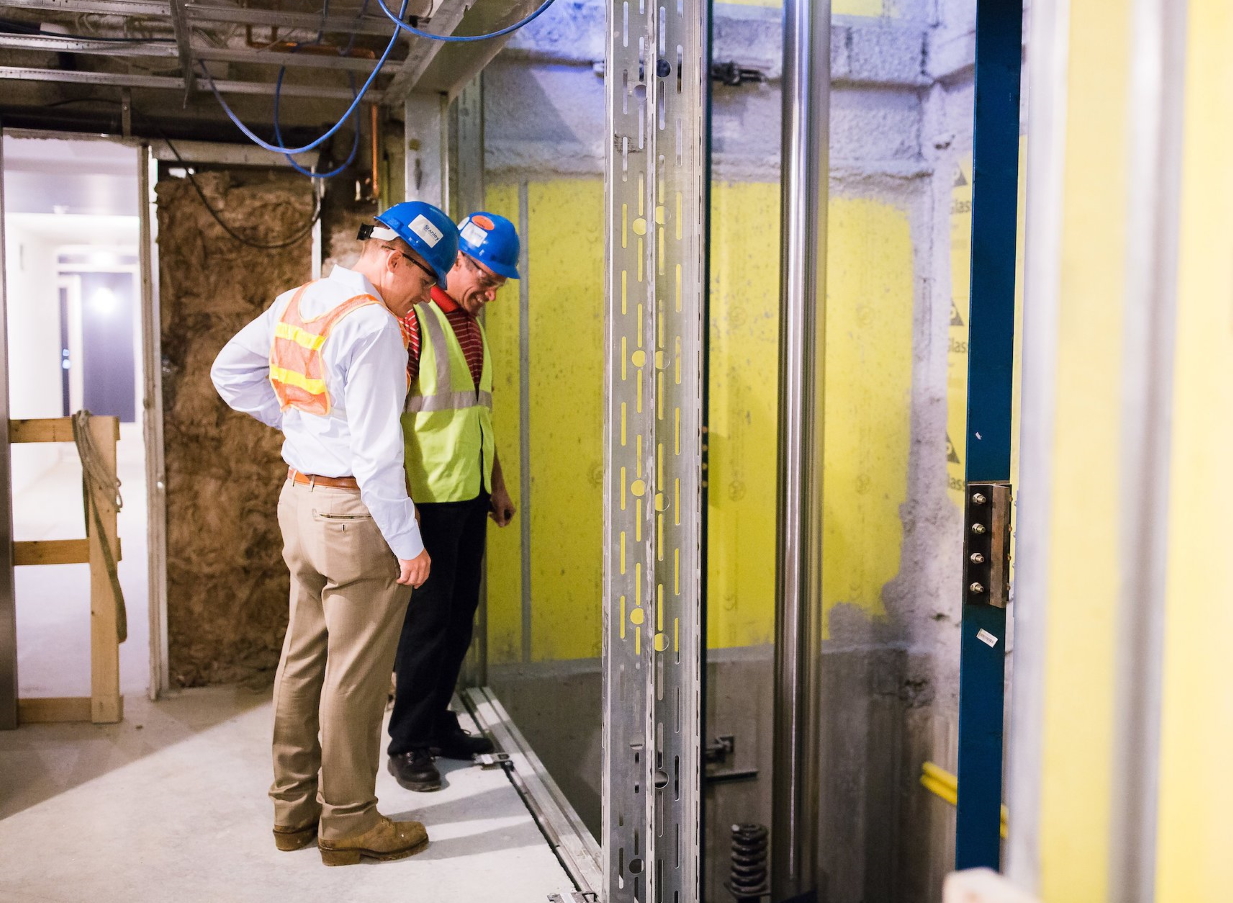EM – Thanks to the process of urbanization and the tendency of development in the vertical direction, the number of elevators, escalators in the worldwide has increased significantly across countries, regions. This development has also led to concerns regarding the safety of the old elevator system, which has been in operation for many years.
According to statistics from the Pacific Asia Lift and Escalator Association (PALEA) at the October 2023 conference in Hanoi, countries in the Asia Pacific account for about 16% of the global number of elevators and elevators currently in use, equivalent to about 3.5 million stairs.
In many countries, more than 40 percent of elevators have been in operation for 25 years or more, and only a small fraction of them have been modernized to meet the latest safety standards.
This is one of the major causes of the safety incidents in elevators and escalators, and even the resulting injuries that occur every year to both the users and the workers who are working in this field.
The above issue was one of the important problems mentioned by Mr. Eric Darmenia, Secretary of PALEA, in his commentary – “Maintainance and Modernization of Existing Lifts and Escalators” at the PALEA/VNEA International Elevator Information Conference held on October 5 in Hanoi.
According to Mr. Tse Man Ho, an engineering specialist at the Hong Kong Electrical and Mechanical Services Department (EMSD), Hong Kong has more than 9,000 high-rise buildings, which is why the safety of elevators and escalators is extremely important in this city.

With the growing rapidly of high-rise buildings, the issue of old elevators is also a concern. According to data at the workshop, Hong Kong has about 71,000 elevators, of which about 61% have been in operation for 21 years or more.
There are approximately 43,000 older elevators of all the elevator systems currently in operation that are not equipped with the necessary safety devices such as Double Brake; Unintended Car Movement Protection (UCMP); Ascending Car Overspeed Protection (ACOP).
In Vietnam, with 400,000 elevators and escalators operating every day, and an annual need for new installations of about 35,000, Vietnam is not immune to the common concern of “old” or out-of-date elevators shortly. Meanwhile, Vietnam has no regulations on additional safety devices for existing elevator systems such as UCMP or ACOP as well as other new safety devices.
According to statistics comparing the life cycle of elevators, escalators, and some other transportation equipment such as cars, airplanes, ships, or cable cars. It found out that elevators and escalators stand out with a life cycle of over 30 years. Meanwhile, devices like ships and cable cars have a life span of over 25 years, airplanes have a life span of over 15 years…
According to Eric Darmenia, compared to some other transportation devices, elevators and escalators can be seen as one of the means of transportation with the longest life cycle. However, this long life cycle also poses major challenges such as having to perform more frequent maintenance and repair with components and equipment that were designed and installed 20 to 25 years ago.

The average life cycle of some transportation equipment. Sources: Discussion by the Secretary of the PALEA Eric Darmenia
Elevator standards and regulations are frequently changed and updated to keep pace with the increasingly modern pace of technological development. However, older elevator systems are installed to outdated standards, which impose lower safety requirements than today’s modern standards, such as no UCMP, ACOP, EmCall, or Automatic Rescue Device, etc. Maintenance must keep pace with improvements in occupational safety, but older elevator equipment does not support this.
There will come a time when it no longer makes financial or logistical sense to continue repairing elevator parts year after year. Service calls will become more expensive, replacement parts will become more difficult to find, and elevator downtimes will become more frequent. Therefore, the Vietnamese elevator industry as well as the world will need a comprehensive solution to solve these problems.
The old elevators can still be made safer, more energy efficient, more reliable, and more comfortable through regular maintenance and through improvements like modernization and updating new technology that increases efficiency, bringing them back to the state of the art.
Additionally, with the development of IoT, surveillance systems, modern elevator management, and professional proactive preventive maintenance, elevator companies claim that these solutions can reduce elevator maintenance by up to 60 percent.

Modernizing elevators is a sustainable option, creating significant economic, environmental, and social benefits for individuals, society at large, and the Earth
Replacing an entire existing elevator system with a new one requires high investment costs and it is not a sustainable solution.
Meanwhile, modernizing, and upgrading elevators not only helps to enhance the overall safety, performance, and aesthetics of the equipment but also ensures that social resources are not wasted, towards a Circular Economy that benefits all parties.
According to Research and Market’s forecast, the global elevator retrofit market size was valued at over $7,781 million in 2020 and is expected to reach $19,941 million by 2030, achieving a compound annual growth rate (CAGR) of 9.4% during the period 2021-2030.
The global elevator market is also predicted to see outsized growth due to growing elevator safety concerns and new technologies constantly being introduced to the market such as the Internet of Things (IoT). And this could also become a very attractive “piece of cake” when the market for new implants is saturated.



